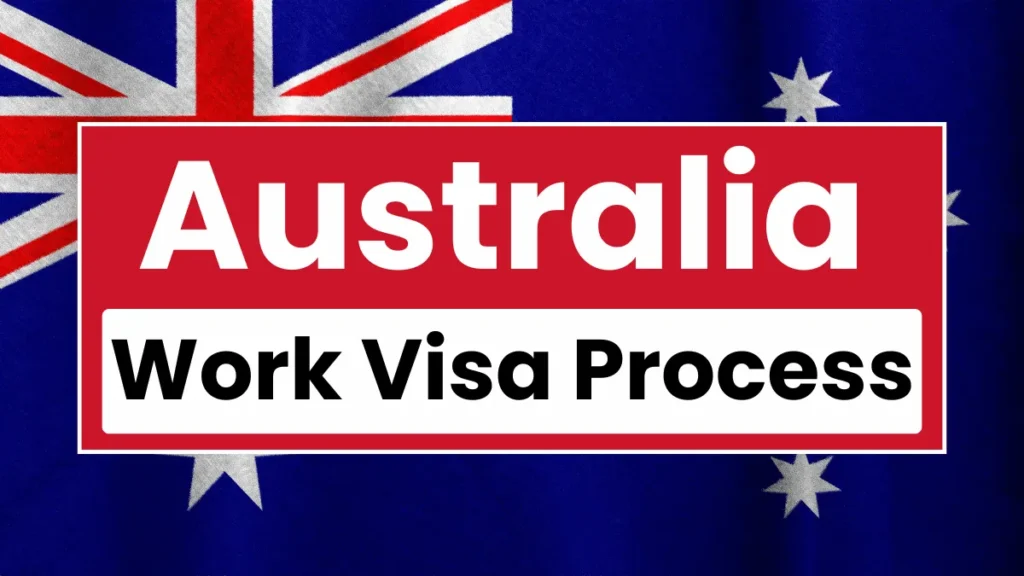
How to Get an Australia Work Permit Visa from Bangladesh
Australia has become a prime destination for skilled workers from across the globe due to its robust economy, high living standards, and vast career opportunities. For Bangladeshi nationals aspiring to work in Australia, obtaining a work permit visa is a crucial step. This guide outlines the essential steps, requirements, and processes for securing an Australian work permit visa from Bangladesh.
1. Understanding the Types of Work Permits
Australia offers several types of work permits, depending on your qualifications, skills, and job offers. Below are the most common categories:
a. Temporary Skill Shortage (TSS) Visa (Subclass 482)
This visa is for individuals sponsored by an Australian employer to fill a position for which no local worker is available.
b. Skilled Independent Visa (Subclass 189)
This visa allows skilled workers to live and work in Australia permanently without requiring employer sponsorship.
c. Skilled Nominated Visa (Subclass 190)
This is a permanent visa for individuals nominated by an Australian state or territory.
d. Employer Nomination Scheme (ENS) Visa (Subclass 186)
This visa allows skilled workers to work permanently in Australia after being nominated by an employer.
e. Working Holiday Visa (Subclass 417)
Available for young adults from eligible countries, this visa allows individuals to work temporarily while holidaying in Australia. Unfortunately, Bangladesh is not currently on the eligible country list.
2. Eligibility Criteria
Before applying for an Australian work permit, ensure you meet the following eligibility requirements:
a. Age Limit
Most work visa categories have an age limit, usually between 18 and 45 years, though exceptions exist for specific roles or regions.
b. Skills Assessment
A positive skills assessment from an authorized assessing body is required for skilled visas. Each profession has a designated assessing authority, such as Engineers Australia for engineering professions.
c. English Language Proficiency
You must prove your English proficiency through tests like IELTS, TOEFL, or PTE. The required score varies by visa type and occupation.
d. Health and Character Requirements
You need to undergo a health examination and provide police clearance certificates to prove good character.
e. Educational Qualifications
Relevant educational qualifications are essential, particularly for skilled visa categories.
3. Key Steps to Apply for a Work Permit Visa
Step 1: Determine Your Visa Type
Identify the most suitable visa based on your qualifications, skills, and circumstances. Consult the Australian Department of Home Affairs website for detailed information on visa types.
Step 2: Check the Skilled Occupation List (SOL)
Review the SOL to ensure your occupation is in demand in Australia. Occupations are classified under the Medium and Long-term Strategic Skills List (MLTSSL), Short-term Skilled Occupation List (STSOL), or Regional Occupation List (ROL).
Step 3: Undergo a Skills Assessment
Apply for a skills assessment through the relevant authority. For example, teachers would approach the Australian Institute for Teaching and School Leadership (AITSL), while IT professionals would approach the Australian Computer Society (ACS).
Step 4: Improve English Proficiency
If you haven’t already, take an English language proficiency test such as IELTS. Ensure you meet the minimum score required for your visa subclass.
Step 5: Expression of Interest (EOI)
Submit an Expression of Interest (EOI) through the SkillSelect system for relevant skilled visas like Subclass 189 or 190. Provide details about your skills, qualifications, and experience.
Step 6: Obtain Sponsorship or Nomination
For employer-sponsored visas, secure a job offer from an Australian employer who can sponsor your application. For state-nominated visas, apply for a nomination from an Australian state or territory.
Step 7: Apply for the Visa
Once you receive an invitation to apply (ITA), submit your visa application through the Department of Home Affairs portal. Attach all necessary documents, including:
- Valid passport
- Skills assessment result
- English test scores
- Job offer letter (if applicable)
- Health and character certificates
- Educational and professional documents
Step 8: Pay the Visa Fee
Pay the required visa fee online. Fees vary depending on the visa type. For instance, the Subclass 482 visa application fee starts at AUD 1,330, while the Subclass 189 visa fee starts at AUD 4,115.
Step 9: Attend an Interview (if Required)
Some applications may require an interview or additional documentation. Be prepared to provide further evidence if requested.
Step 10: Wait for Decision
Visa processing times vary by category and the completeness of your application. Ensure you monitor your application status online.
4. Tips for a Successful Application
- Stay Updated: Regularly check the Australian Department of Home Affairs website for updates on visa requirements and policies.
- Gather Documents Early: Compile all necessary documents in advance to avoid delays.
- Consult Experts: Seek assistance from a registered migration agent for guidance and support.
- Provide Accurate Information: Ensure all details in your application are accurate and consistent.
5. Common Challenges and Solutions
a. Job Offer Requirements
For employer-sponsored visas, securing a job offer can be challenging. Use Australian job portals like SEEK, Indeed, or LinkedIn to connect with employers.
b. Skills Assessment Delays
Start your skills assessment early, as it may take several weeks. Ensure you provide all required documents to avoid delays.
c. English Test Retakes
If you don’t achieve the required English score, prepare thoroughly and retake the test. Utilize online resources and practice tests.
6. After Receiving Your Visa
a. Travel to Australia
Book your flight to Australia and make arrangements for accommodation. Research cities and regions based on your job location and personal preferences.
b. Understand Your Visa Conditions
Abide by the conditions of your visa, such as working only for the sponsoring employer or residing in a designated region.
c. Apply for Medicare and Tax File Number (TFN)
Register for Medicare (if eligible) and apply for a Tax File Number (TFN) to begin working legally in Australia.
d. Join Local Communities
Connect with Bangladeshi communities in Australia to ease your transition and build a support network.
7. Conclusion
Obtaining an Australian work permit visa from Bangladesh involves meticulous planning, research, and preparation. By understanding the requirements and following the steps outlined above, you can enhance your chances of securing a work visa and beginning a new chapter of your professional journey in Australia. Consider consulting migration experts for personalized assistance and stay informed about changing visa policies to ensure a smooth application process.

